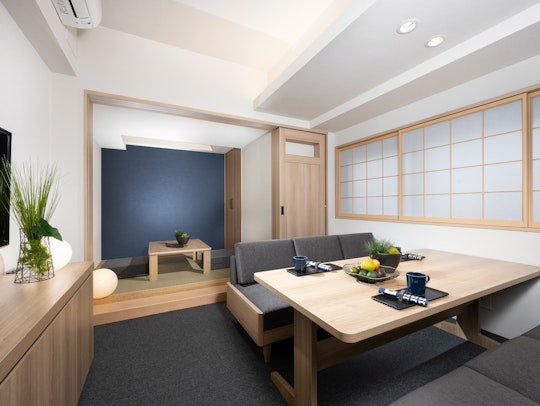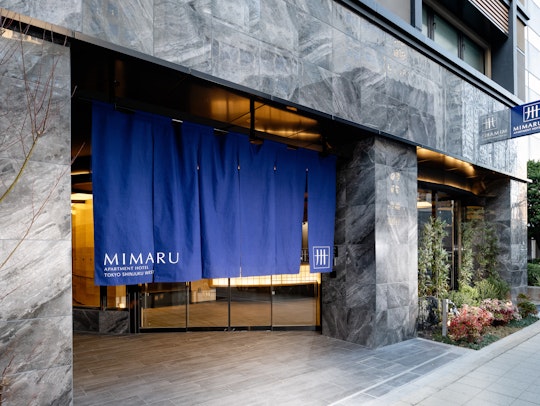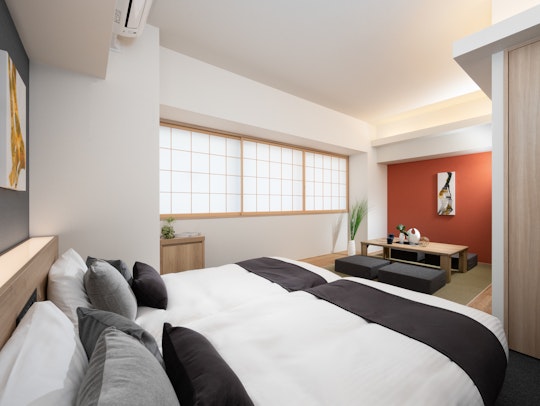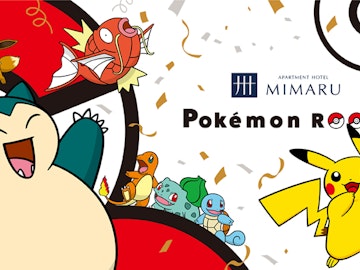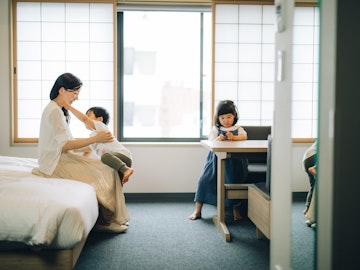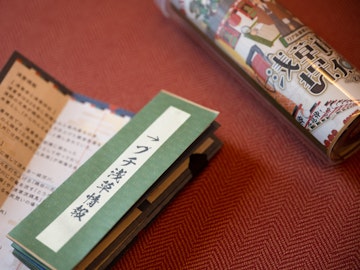One-day experience of making traditional Japanese sweets at Shinjuku
Close your eyes and imagine.
Sipping warm matcha from a beautifully decorated Japanese lacquer, admiring a serene Zen garden from the big window.
Bright colored flowers lined up on the tatami.
Flowers? It can’t be…
After looking carefully, then you realize... it’s Wagashi.
Silky as peach skin and sweet as fresh distilled honey, Wagashi is a traditional Japanese sweet.
The perfect combination to serve with roasted green tea.
What is Wagashi?
Wagashi (和菓子), literary Japanese sweets, is a generic name for a number of traditional Japanese sweets. Basic ingredients are red bean paste and various types of rice flour. Every Wagashi differs from one to another, but its extreme sweetness is a common characteristic.
Wagashi can be categorized into three groups based on the amount of water used: Namagashi, Han-namagashi and Higashi. Namagashi, from the subfix nama in Japanese, is raw and should be eaten straight after being made because of the high percentage of water used. On the other hand, Higashi has a dry consistency which makes it lasts longer. Lastly, Han-namagashi is neither raw nor dry but awkwardly in the middle of the two categories.
Wagashi can also be divided based on the type of ingredients used or by the cooking method. Namagashi is raw and perfect to be served with matcha because of the contrast between its sweetness and the bitterness of matcha. This sweet is made by mixing Shiro Anko (white bean paste), sugar, water, corn starch and rice flour. After creating the dough, food color and other ingredients are added.
Since the dough is very malleable, it can be molded into different beautiful shapes symbolizing Japanese tradition and the four seasons. Momiji shaped sweets can be enjoyed during autumn while Sakura shaped sweets are common during spring.
There are infinite room for imagination when making Wagashi!
Type of Wagashi
Aside from Namagashi, here are other types of Wagashi: Dorayaki, Dango, Daifuku, and Taiyaki.
Daifuku (大福)
Daifuku is made of soft rice cake (mochi) wrapped on a small round of smooth, sweet bean paste or other fillings. It’s covered with a light dusting of potato starch to keep it from sticking together.
Dango (だんご)
Dango is a small round soft rice cake steamed and served with sweet sauce or Anko paste.
It’s freshly steamed on the street and recommended to be eaten fresh.
Dorayaki (どら焼き)
Dorayaki is a Japanese pancake cooked on an iron plate and filled with Anko, sweet potato filling or matcha whip cream. Dorayaki became famous in Western countries because of its appearance on the well-known comic/anime.
Taiyaki (たい焼き)
Taiyaki is a fish shaped sweet which can be filled with red bean paste, custard, or other seasonal filling. It’s made on a special iron plate which gives it the classic shape of a koi carp and best eaten while warm and still fragrant.
The Challenge
This time I decided to challenge myself with another beautiful journey into Japanese tradition and tried to make Wagashi with my own hands.
Located in Shinjuku, a vibrant city in the heart of Tokyo, I visited a tiny old shop called Eikodou run by a family of Wagashi expert. We took a step back in time all the way to Showa period and enter the retro and comfy shop Kataoka family. Kataoka’s shop is loved by the neighborhood not only because they prepare and sell a large variety of sweets, but also because they teach people how to do it!
They held classes on Wagashi making and offer different options: long-time classes for residents and one-day experience for tourists. For those who wants to have a once in a lifetime experience to create and enjoy Japanese sweets, this is the perfect place!
I took the opportunity myself, so here I am kneading sweets!
The Class
Class at Eikoudou are taken in small group of 4 people. Having your own desk near the teacher where you can learn all the secrets behind Namagashi making. Kataoka sensei prepare the dough for today’s lesson beforehand but creating the entire Wagashi is done by the participants themselves. Every month Kataoka sensei creates two new creations and share them with his students.
The lesson was structured this way. First, the teacher explained about Wagashi briefly and taught participants how to create it. Then, participants were asked to prepare 2 different types of Namagashi, 2 pieces for each type. Kataoka sensei then showed how to create them one by one. Then, participants were asked to copy his creation. After making it, all four of it can be taken home. A sweet treat for the hard work!
The first time I watched how Kataoka sensei created Namagashi, I was astonished and was blown away by his technique. However, I was not discouraged as every step was thoroughly taught and understood. I was able to enjoy every step as my Wagashi formed its shape. At the end of the lesson, I was proud of myself and my work! Moreover, the sweets were delicious!
It’s a really great experience to have!
Why not try and enter the world of traditional Japanese sweet making?
Shinjuku Eikoudou
Address: 30-7 Wakamatsucho, Shinjuku City, Tokyo 162-0056
Hours: Monday~Saturday /10:00~19:30
Price: 3600yen per hour
Experience It Here
Select by Photo
MIMARU Tokyo Shinjuku West
- Western-Style
- Japanese-Western-Style Room
- Bunk bed
- Studio
- ~4 guests
- ~5 guests
- ~6 guests











